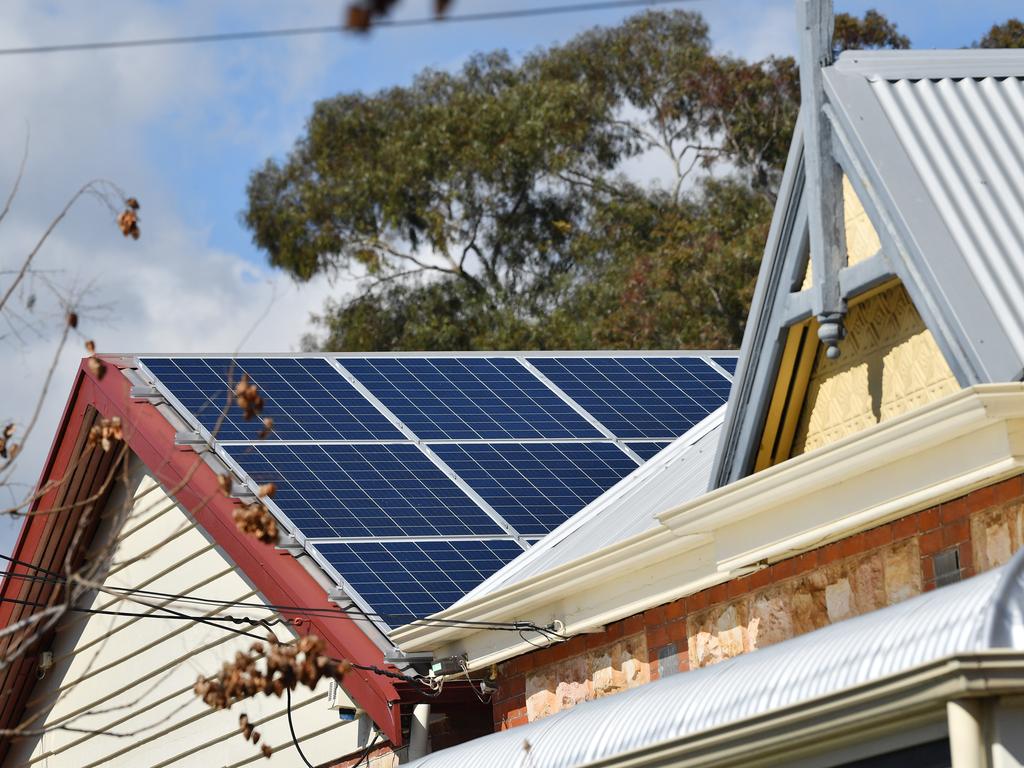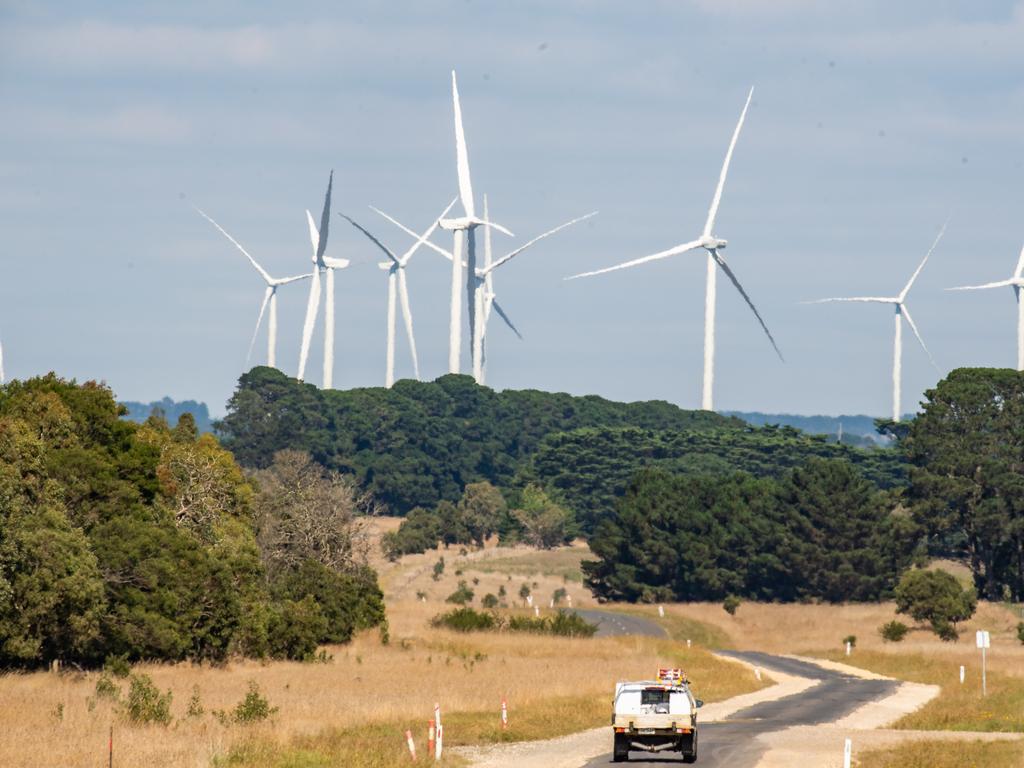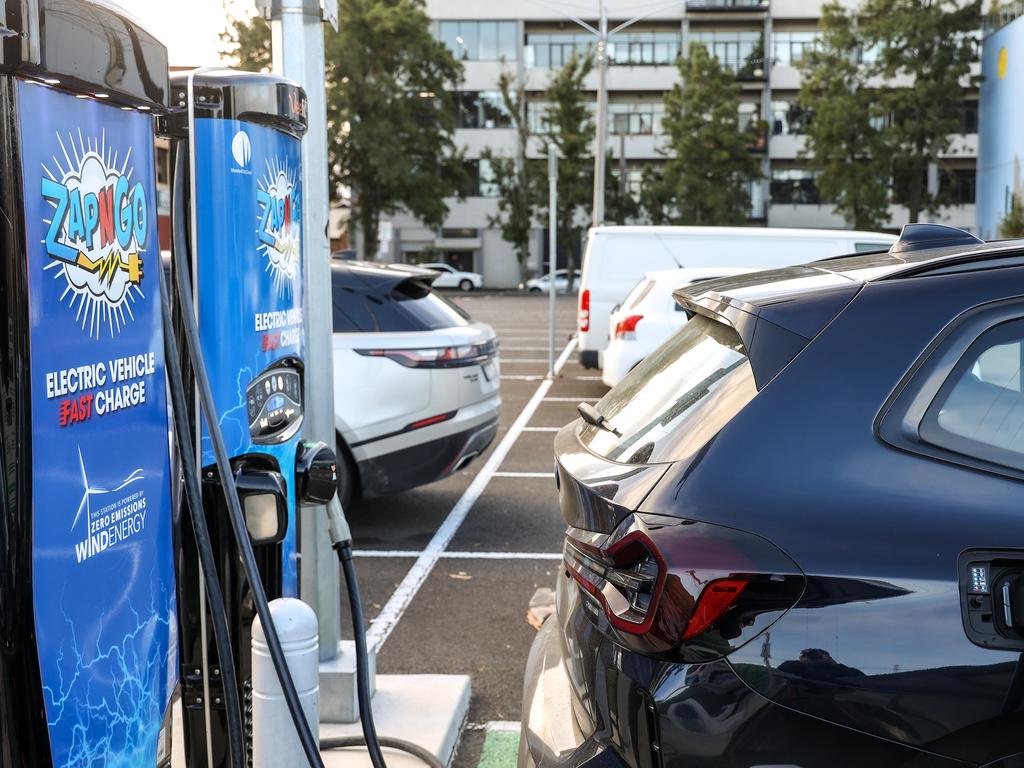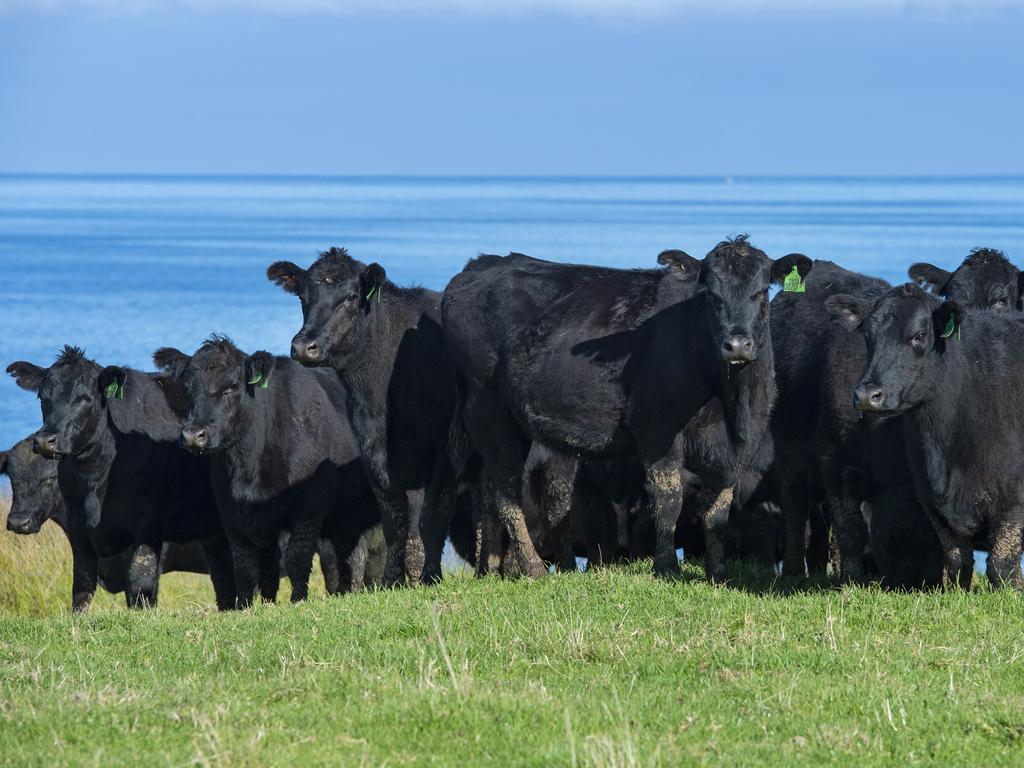Labor climate bill: How Australia will cut emissions by 43 per cent
With the government set to lock in Australia’s 2030 emissions target, the focus will now move from the 43 per cent figure, to how the cuts will actually be achieved.
Wind turbines – once dubbed the “dark satanic mills of the modern era” by former Prime Minister Tony Abbott – will triple in capacity by 2030 as part of efforts to cut Australia’s emissions by 43 per cent, the energy industry has forecast.
And the percentage of Electric Vehicles (EVs) on Australian roads could hit 20 per cent by the end of the decade, about 66 times today’s number.
With the government set to legislatively lock in Australia’s 2030 emissions target, thanks to support from The Greens, the focus will move from the 43 per cent figure – which some say is way too low – to how it will actually be achieved.
Last week Climate Change and Energy Minister Chris Bowen revealed Australia’s greenhouse gas emissions were now 21.4 per cent less than what they were in 2005, almost exactly halfway to the 43 per cent goal.
Labor’s Powering Australia policy outlines a number of strategies for achieving the 43 per cent cut, including boosting the share of renewables in the National Electricity Market (NEM) to 82 per cent, and making more large companies accountable for their emissions. There’s also big money for new transmission lines, solar banks and community batteries, and a promise to make the public service net zero by 2030.


The Australian Energy Market Operator has already forecast how it will bring down industry emissions through its Integrated System Plan, a 30-year road map for the transformation of the NEM.
But other heavy-emitting sectors of the economy, such as agriculture, mining and the non-car parts of the transport industry, have no such road map.
Alison Reeve, a climate and energy expert at the Grattan Institute, said the previous government was “not expecting any sector other than the electricity sector to have a serious change in emissions (by 2030), because there wasn’t any policy to drive change in those other sectors”.
“The incoming government … have set out a number of different things in different sectors that they think can get the result of 43 per cent,” she said.
“But it’s difficult to comment on the details of the policy because you can’t see the assumptions behind the modelling, and it would be nice if we could see those.”
Electricity and Stationary Energy
According to the latest quarterly report from the National Greenhouse Gas Inventory, these two sectors make up slightly more than half of Australia’s total greenhouse gas emissions: almost 54 per cent.
While the broader energy sector’s greenhouse gases will be hard to abate, the AEMO plan, devised in lock-step with the industry, shows how emissions from our electricity will decline year on year as more renewables enter the system.

According to the “Step Change” scenario in the AEMO plan (judged by the industry to be the most likely of four possible scenarios), wind turbines in Australia will generate 34.4 gigawatts of power by 2030-31, almost exactly triple the expected 2023-24 output of 11.5 gigawatts.
Meanwhile black and brown coal will generate just seven gigawatts of electricity by the end of the decade, as more coal-fired power stations are retired.
AEMO predicts Australia’s solar boom will continue, with rooftop panels generating 37 gigawatts by decade’s end (up from the anticipated 21 gigawatts next year). And solar farms are expected to contribute a further 13 gigawatts by 2030, up from 8 gigawatts now.
According to the AEMO’s “Step Change” scenario, the sector will produce 40 megatons of carbon dioxide in 2030-31 – a big cut from the 135 megatons it pumped into the atmosphere last year.

Transport
Transport currently constitutes 18.6 per cent of Australia’s emissions, and two thirds of that figure comes from light vehicles: ie, cars on the street.
The government has announced it will do a number of things to increase the number of electric vehicles (EVs) on our roads, including dropping the applicable fringe benefits tax (which they say will bring the price down by $9000) and ensuring 75 per cent of new additions to the Commonwealth fleet will be EVs by 2025.
In addition, the government has announced $14 million for the on-road testing of cars on Australian roads to check whether they meet manufacturers’ claims for fuel efficiency and emissions output.

But Ms Reeve said the government could go one step further, and actually mandate an emissions standard for new car sales in Australia. The idea has been looked at several times in the past, including by former Treasurer Josh Frydenberg, but never actioned, Ms Reeve said.
“It means that manufacturers have to meet a fleet average for the tailpipe emissions. That pushes emissions down over time without reducing consumer choice,” she said.
Electric Vehicle Council CEO Behyad Jafari said about 2.5 per cent of all light vehicles sold in Australia right now were electric, and this was expected to jump to 25 per cent by 2030.
Just over 0.3 per cent of cars on the road now were electric, but this could jump to 20 per cent – 66 times today’s figure – by 2030, Mr Jafari said.
Agriculture
Australia’s agriculture sector currently accounts for 15.8 per cent of emissions. The National Farmers Federation has a goal for 2050 – net zero – but none for 2030, although some associated organisations such as the Meat and Livestock Association are aiming to be carbon neutral by the end of the decade.
While farmers will play a role in land management projects that sequester carbon, the big hope for reducing emissions in the sector is seaweed feed additives that reduce the methane emissions of livestock. But while the additives look promising, and the government has pledged $8 million in funding for the Australian Sustainable Seaweed Alliance to progress research, the products are not at the commercial stage just yet, and there remain further challenges: while it might be easy enough to include the additives in the feed of dairy cows that a farmer sees twice a day, it is a much greater challenge when you’re talking about grazing cattle that a farmer might see once a year.

The previous government estimated livestock feed could help the agriculture sector reduce its emissions by 29-36 per cent by 2050, but did not provide an estimate for the year 2030.
A spokesperson for the National Farmers Federation said they were keen to see more information from the government about what the 2030 goal means.
“The devil will be in the detail of how it’s implemented,” the spokesperson said.
Mining
The greenhouse gases that escape from mining operations – called “fugitive emissions” – constitute 10.4 per cent of Australia’s total output. But they’re also hard to contain, and experts believe they’re a problem we’ll have to solve closer to 2050.

Of more pressing concern for Australian mining companies now is the government’s plan to make more businesses accountable for their emissions. Currently, 215 companies in Australia have their emissions tracked, but the government has announced it intends to lower the baseline of this so-called “safeguard mechanism”. This means more companies will have to work harder to curtail their emissions so they don’t exceed the baseline, or else they will have to buy more carbon offsets.
While the Business Council of Australia and other groups support the lowering of the baseline, negotiations over this issue will be complex.
Minerals Council of Australia CEO Tania Constable said the industry was already in “detailed discussions” with the government.
“The government must ensure that changes to the safeguard mechanism ensure that Australian industry remains internationally competitive and the unique needs of each facility are understood, particularly the availability of technology each facility needs to reduce emissions,” she said.
More Coverage
Originally published as Labor climate bill: How Australia will cut emissions by 43 per cent



